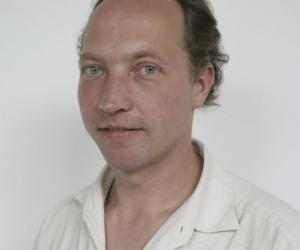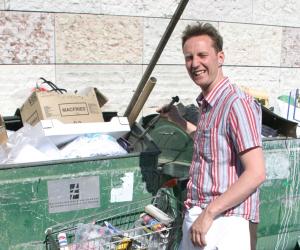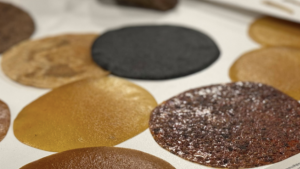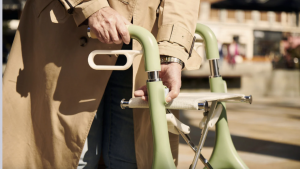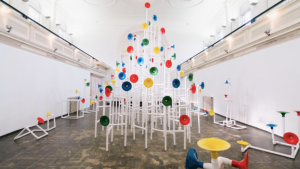
“Use what you’ve got,” proclaimed master product designer Tord Boontje in his sensitive, meditative presentation at Design Indaba Conference 2010. Here he responds to questions from the audience submitted via SMS. Read Maciek Dubla’s blog post.
Would you say your products are accessible to normal every day people or only high-end exclusive users.
This depends on which of my designs you are talking about, the crystal chandeliers are for example not at all accessible but the Midsummer Light or Garland Light are very accessible.
Where can South Africans get your products?
Imagenius – www.imagenius.co.za
You’ve done a lot of developmental projects in various parts of the world. What is the significance of introducing new cultures into Western design?
I think the significance is purely economic. By using the positive aspects of globalisation (i.e. transportation and communication), it is possible to gain access to Western markets if you have the right designs to sell. As designers we can help with this.
Will you be coming to do a developmental project in South Africa?
When I came to the Design Indaba, nine of my students from the Royal College of Art came with me (very kindly sponsored by Design Indaba) and they are now working with South African companies and artisans on different projects, which we can hopefully publish next year at the Design Indaba. These students were accompanied by their tutor Jurgen Bey. We titled the project '"Learning from Africa".
How do you reconcile your work for big brands with your niche design-art pieces and your community empowerment projects?
They are just two different parts of my studio. Just like I work in hand craft projects and mass production industrial design. I like diversity.
As the head of the product design department at the Royal College of Art, what do you think is most important in design education today?
To help people develop themselves and to find their own creative voice as artists or designers. As individual as possible thinking about social well-being.
“Use what you’ve got,” proclaimed master product designer Tord Boontje in his sensitive, meditative presentation at Design Indaba Conference 2010. Here he responds to questions from the audience submitted via SMS. Read Maciek Dubla’s blog post.
Would you say your products are accessible to normal every day people or only high-end exclusive users.
This depends on which of my designs you are talking about, the crystal chandeliers are for example not at all accessible but the Midsummer Light or Garland Light are very accessible.
Where can South Africans get your products?
Imagenius – www.imagenius.co.za
You’ve done a lot of developmental projects in various parts of the world. What is the significance of introducing new cultures into Western design?
I think the significance is purely economic. By using the positive aspects of globalisation (i.e. transportation and communication), it is possible to gain access to Western markets if you have the right designs to sell. As designers we can help with this.
Will you be coming to do a developmental project in South Africa?
When I came to the Design Indaba, nine of my students from the Royal College of Art came with me (very kindly sponsored by Design Indaba) and they are now working with South African companies and artisans on different projects, which we can hopefully publish next year at the Design Indaba. These students were accompanied by their tutor Jurgen Bey. We titled the project '"Learning from Africa".
How do you reconcile your work for big brands with your niche design-art pieces and your community empowerment projects?
They are just two different parts of my studio. Just like I work in hand craft projects and mass production industrial design. I like diversity.
As the head of the product design department at the Royal College of Art, what do you think is most important in design education today?
To help people develop themselves and to find their own creative voice as artists or designers. As individual as possible thinking about social well-being.

